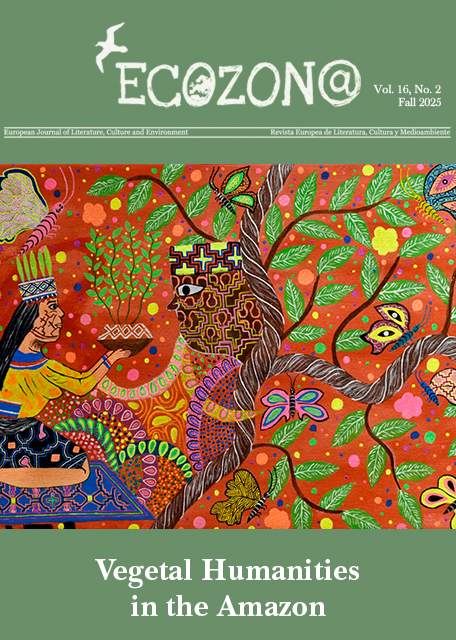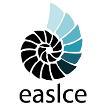Romantic Cybernetics: Jorie Graham, Trevor Paglen, and the Sublime Contradictions of the Anthropocene
DOI:
https://doi.org/10.37536/ECOZONA.2025.16.1.5555Keywords:
Anthropocene, sublime, cybernetics, Romanticism, hybridityAbstract
The Anthropocene sublime is a necessarily hybrid concept, one that is generated from a palimpsest of previous iterations of sublimity, and which is critically modified by contemporary crisis. Alexander R. Galloway’s notion of the “juridico-geometric sublime” captures this hybridity in its combination of Romantic play with the homeostatic model of cybernetics, which brings into effect a synthesis of digital unrepresentability and Romantic freedom. Operating as a figure for the incommensurability generated by the confluence of the Romantic sublime and the cybernetic control paradigm, this version of the sublime also relates the concept to the impact of systems of power on aesthetic representation. This article aims to fill in the ecological gap in Galloway’s conceptualization, while applying this hybrid sublime to the current era of environmental entanglement. In doing so, it argues that a contemporary, Anthropocene sublime reveals both the lingering impact of Romantic modes of environmental thought and the dominance of a cybernetics-derived concept of a mappable technological biosphere. The magnitude of the totality such a hybrid form constitutes is what inspires the experience of terror and awe that characterizes the sublime. The work of the poet Jorie Graham and the artist Trevor Paglen provide vital documents of the hybrid states and representational impasses of this contemporary sublime, as they demonstrate how natural processes are always already folded into economic and technological systems, while nature is both in our devices and irrevocably exteriorized. In different ways, their work demonstrates the essential incommensurability that is generated by the combination of the Romantic and the cybernetic modes of sublimity, while mapping out the political suspension that an Anthropocene sublime necessarily generates.
Downloads
Downloads
Published
Issue
Section
License
Authors who publish with this journal agree to the following terms:
a) Authors retain copyright and grant the journal right of first publication with the work simultaneously licensed under a Creative Commons Attribution License that allows others to share the work with an acknowledgement of the work's authorship and initial publication in this journal (CC BY-NC for articles and CC BY-NC-ND for creative work, unless author requests otherwise.
b) Authors are able to enter into separate, additional contractual arrangements for the non-exclusive distribution of the journal's published version of the work (e.g., post it to an institutional repository or publish it in a book), with an acknowledgement of its initial publication in this journal.
c) Authors are permitted and encouraged to post their work online (e.g., in institutional repositories or on their website) prior to and during the submission process, as it can lead to productive exchanges, as well as earlier and greater citation of published work (See The Effect of Open Access).










